By Louise Irvine
Pierrot stars in countless New Year greeting cards at the turn of the last century, reflecting his status in popular culture. He inspired literature, theater, movies, music and art, including porcelain statuettes that can be seen in the new Art Deco gallery at WMODA. The melancholy clown is over-the-moon in love with Columbine who breaks his heart in favor of Harlequin in the Italian commedia dell’arte performances.

Raphael Tuck New Year Card

Raphael Tuck Happy New Year Card 1904
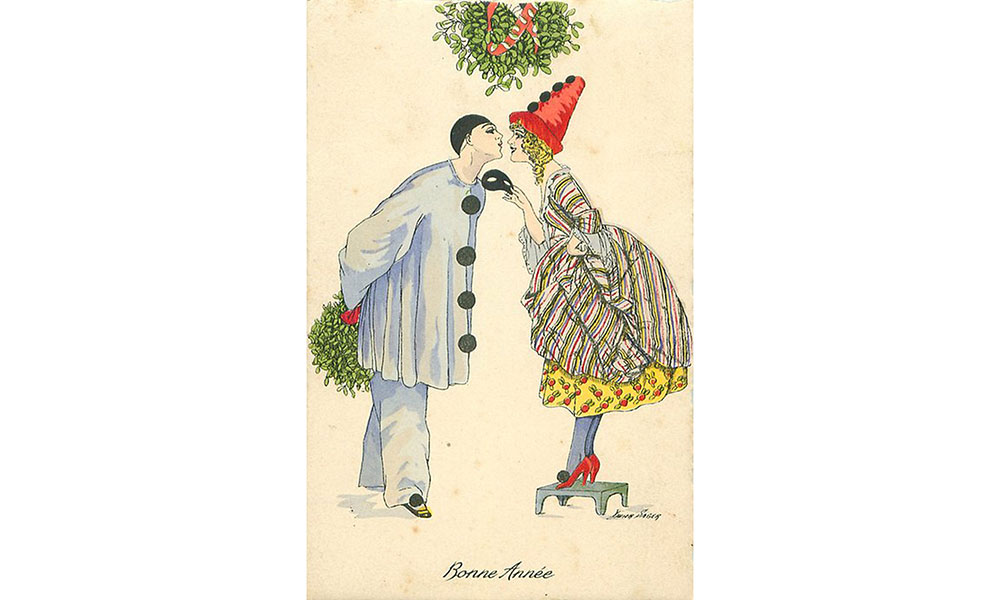
Raphael Tuck New Year Card by Sager 1917
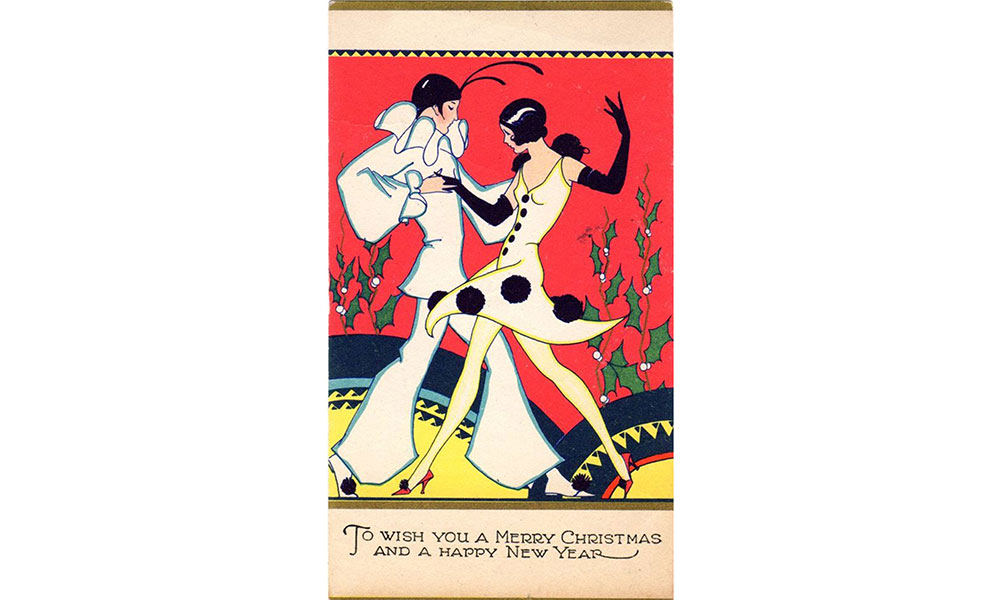
Vintage New Year and Christmas Card
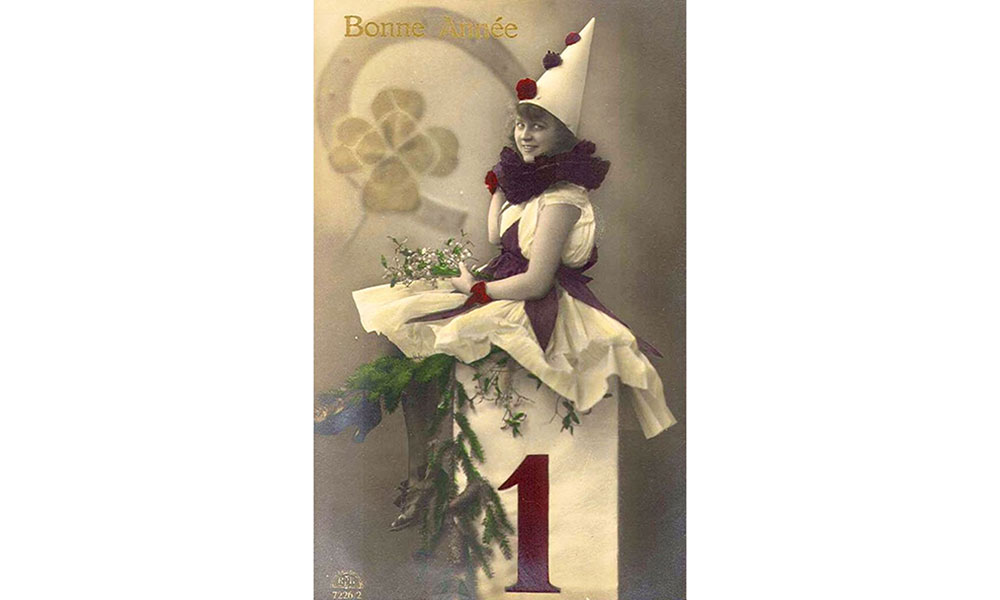
Vintage New Year and Christmas Card
The sad white-faced clown first appeared as Pedrolino in the improvised comic theater that flourished in Italy in the 16th century. He appears unmasked with a powdered face and is characterized by his trusting naiveté, often the butt of pranks. In France, he became known as Pierrot (Little Peter), and in 19th-century Paris, Jean-Gaspard Deburau became famous for his theatrical mime interpretation of the whimsical clown in baggy white clothes and black skull cap.

Rosenthal Enrico Caruso in Pagliacci

Tenor Enrico Caruso in Pagliacci

Pagliacci Movie
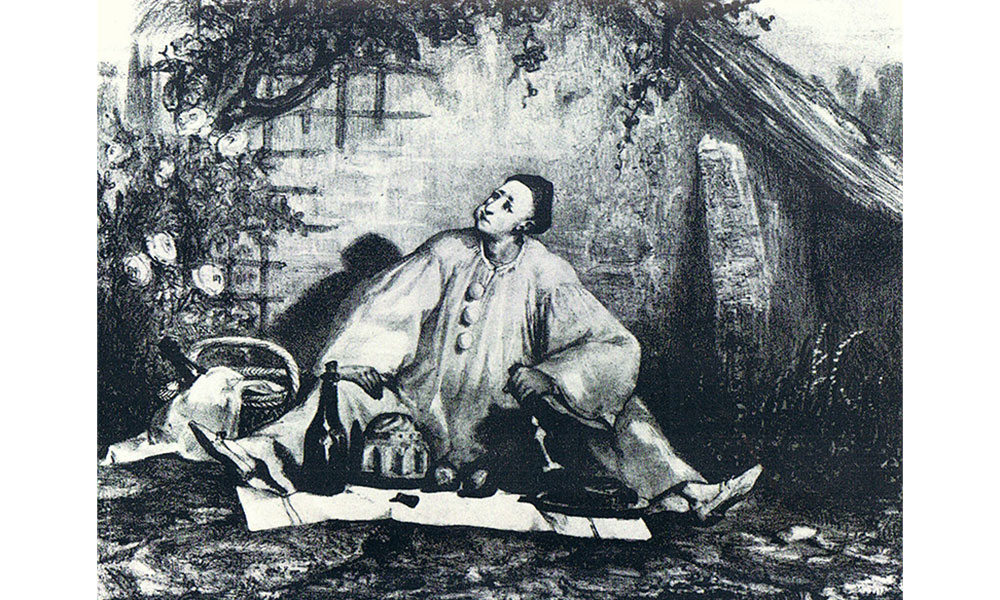
J.G. Deburau as Pierrot

Raphael Tuck Postcard of Seaside Pierrots 1912
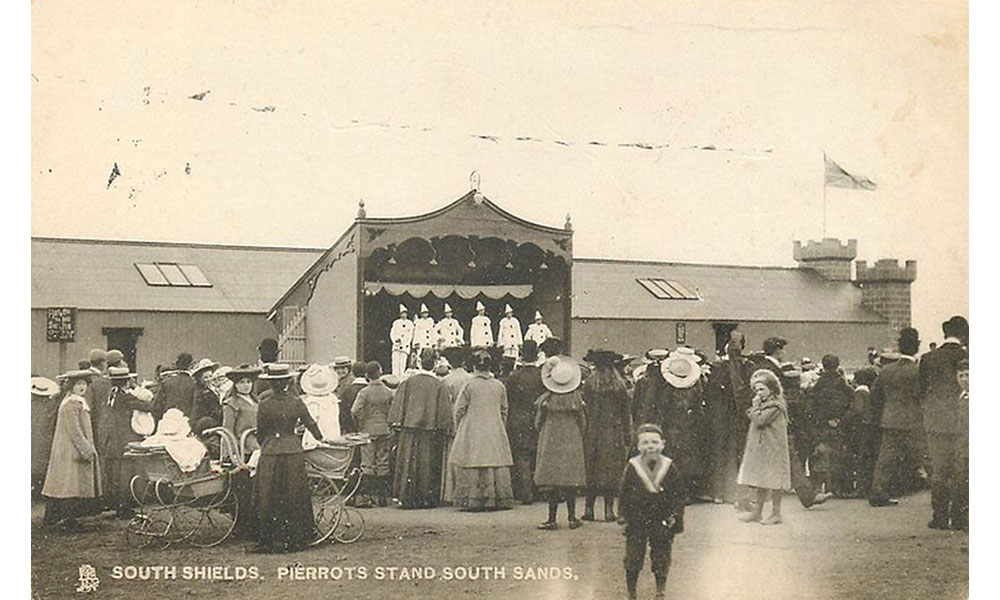
Raphael Tuck Postcard of Seaside Pierrot Troupe 1905
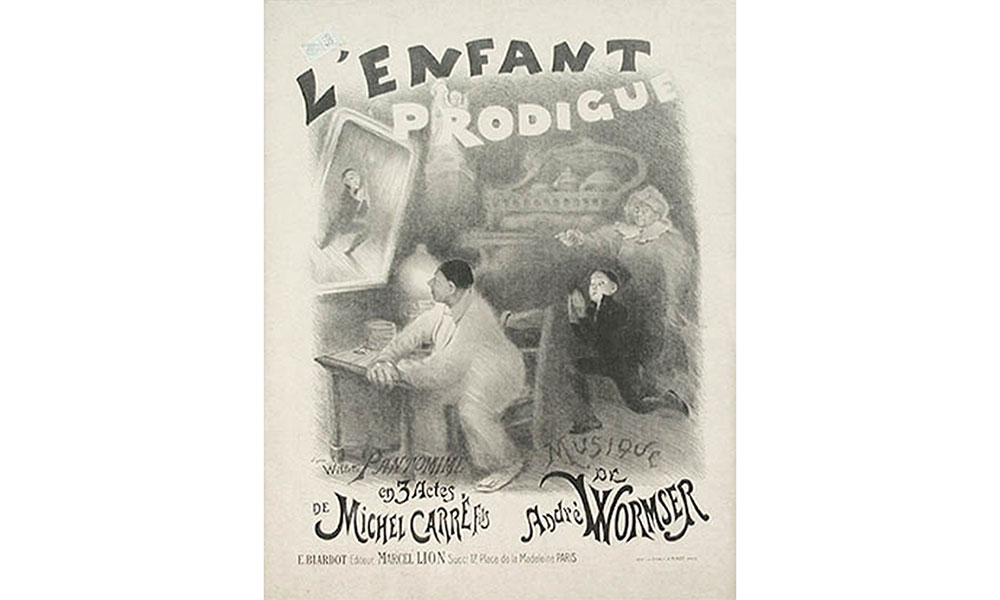
L'Enfant Prodique

Pierrot Absinthe by L. Metivet 1911
Artistic and cultural movements, including the Decadents and the Symbolists, embraced the lovesick clown as their alter-egos. Romantic poets fueled with absinthe transformed him from pathetic to demented. His poignant foibles and unrequited love were interpreted as soulful sensitivity, and he was often portrayed wistfully gazing at the distant moon, his only friend. By the early 20th century, Pierrot was also seen as a disillusioned, slighted clown seeking revenge on women.

Royal Doulton Sentimental Pierrot by C.J. Noke

Doulton Vellum Pierrot by C.J. Noke

Royal Doulton Sentimental Pierrot by C. J. Noke
The 1892 opera Pagliacci, meaning clowns, features a commedia dell’arte troupe whose Pierrot leader murders his wife. A family of Pierrots star in the 1890 pantomime L’Enfant Prodique, and a short film version was screened at the 1900 Paris World’s Fair. In 1907, it was the first feature-length motion picture filmed in Europe and Pierrots stole the show in popular culture. Troupes of Pierrots performed in seaside resorts wearing floppy white costumes and conical hats. The al fresco variety shows included comedy, dance and music, usually played on the banjo.

Pierrot Cigarettes
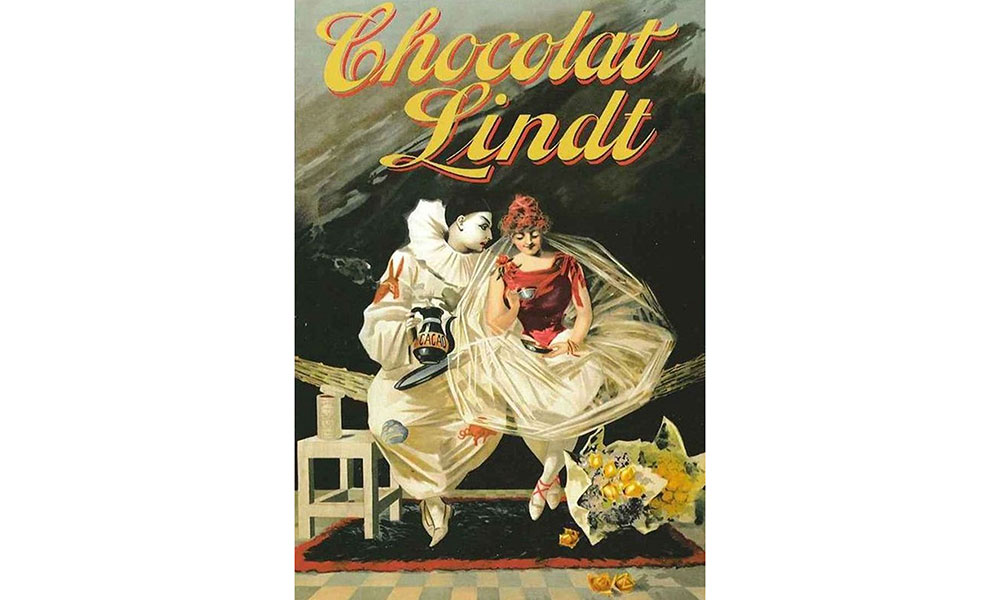
Lindt Chocolate Advert
In the 1890s, Charles Noke modeled a Sentimental Pierrot playing the banjo for Royal Doulton’s first Vellum figures collection. It was so well received that he created new studies for the HN figure series, which were painted with different costumes in the 1920s. At the time, Pierrot appeared in many advertisements promoting hedonic products such as chocolate, cigarettes and absinthe.
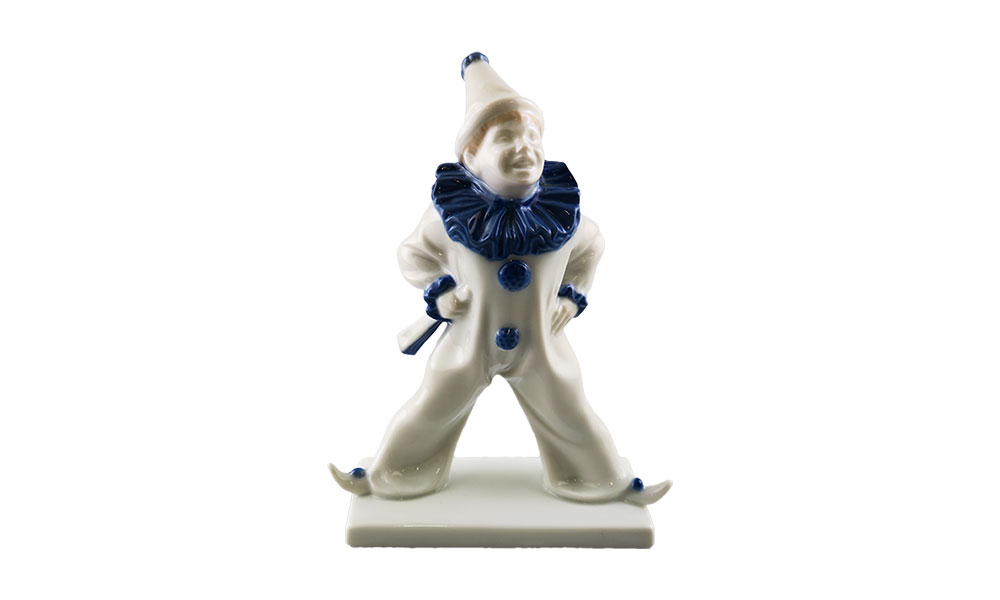
Rosenthal Pierrot Boy
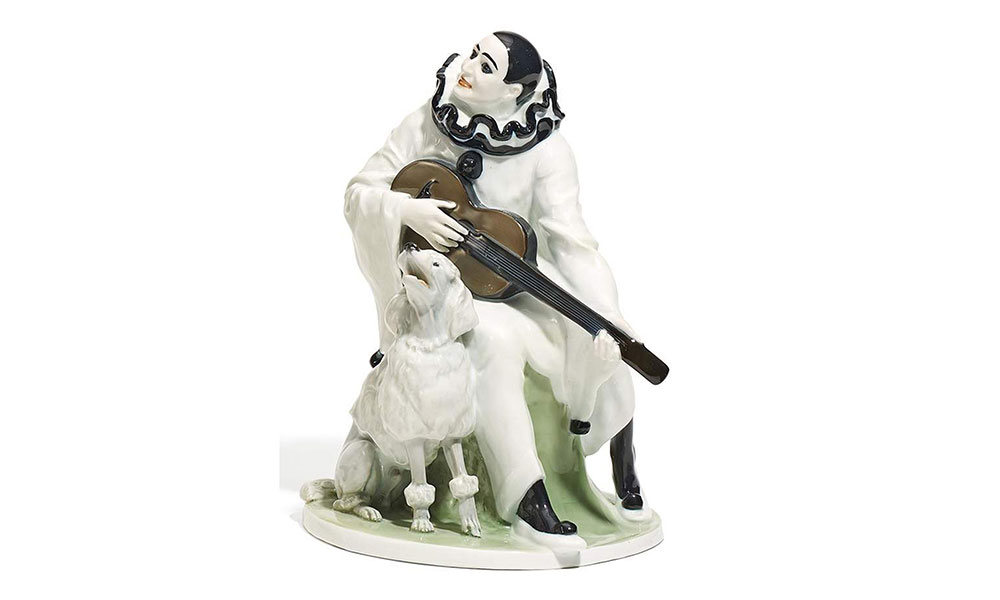
Rosenthal Duet by R. Marcuse

Rosenthal Reclining Pierrot by D. Charol

Hutschenreuther Pierrot and Columbine
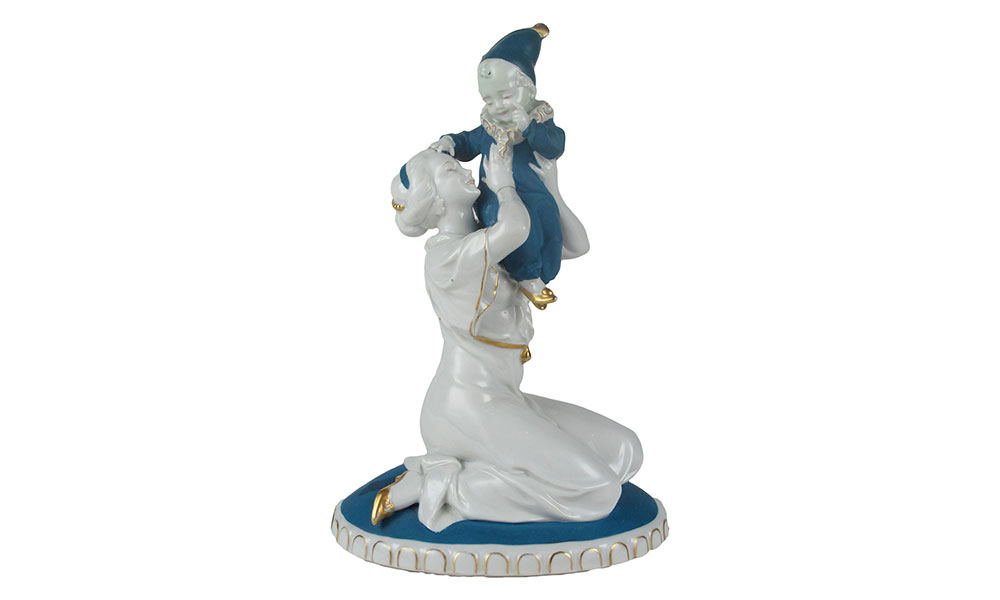
Katzhutte Mother with Pierrot
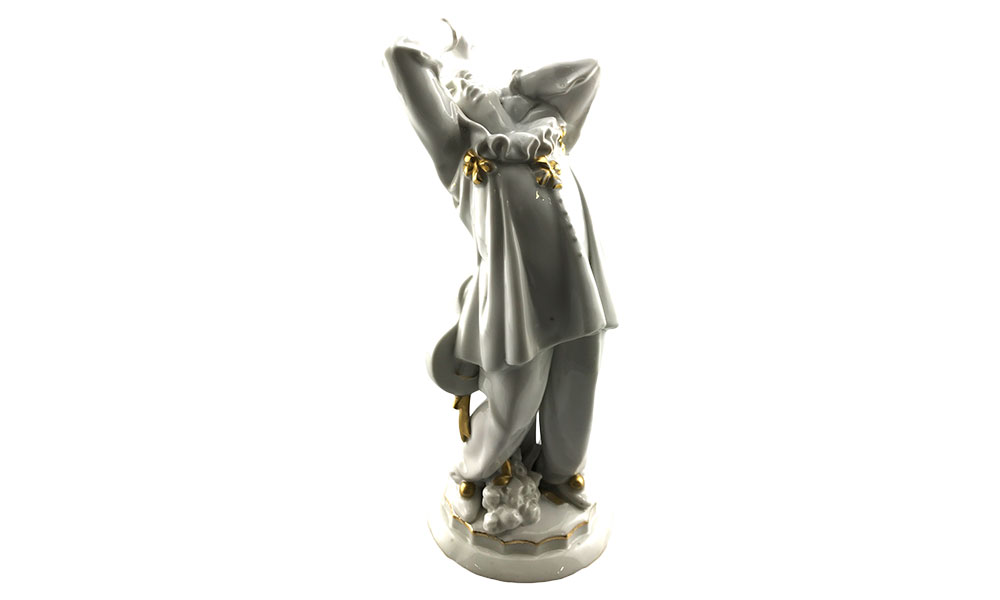
Katzhutte Pierrot

Pierrot & Columbine German
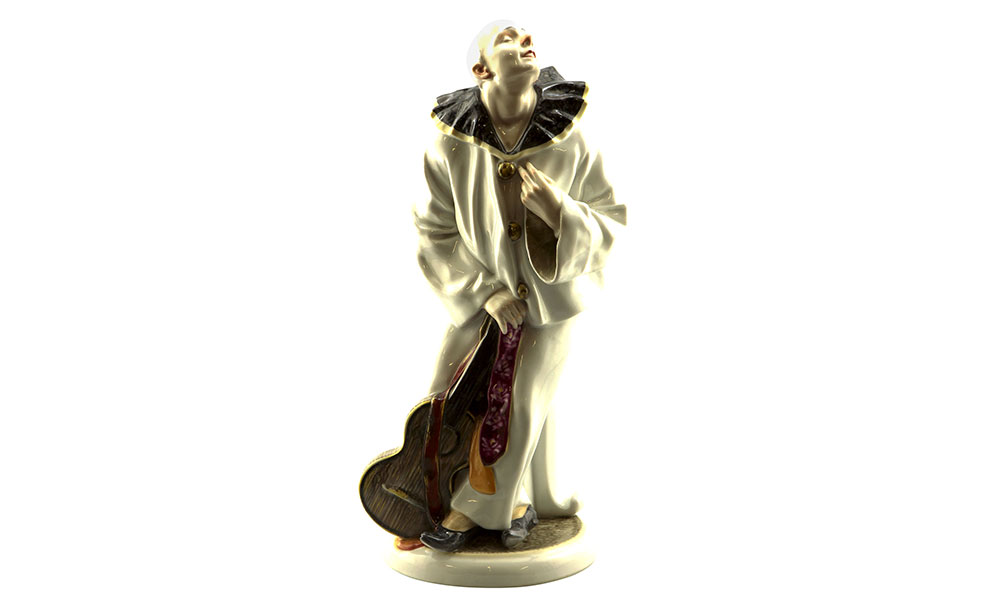
Karl Ens Bajazzo by A. Buschelberger

Heubach Pierrot by W. Bartels
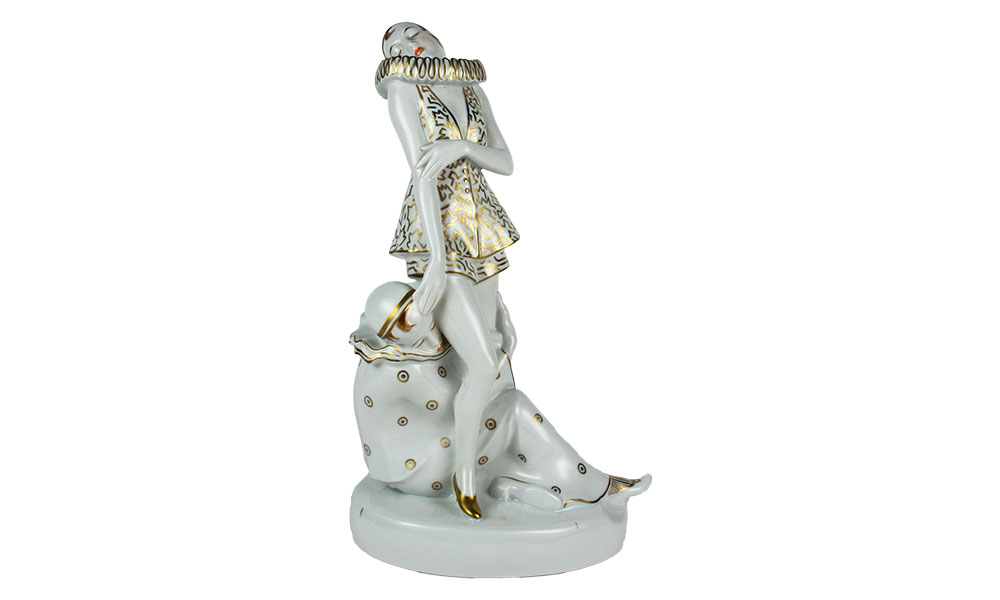
Schwarzburger, Pierrot and Columbine
Greeting cards in the early 1900s also reflected this fascination for Pierrot and he often appears pining for the love of Columbine and serenading her with his lute by the light of the silvery moon. He was particularly popular for New Year cards in Britain and France produced by fine art printers such as Raphael Tuck. Columbine was sometimes portrayed in Pierrot’s white costume with black accents and a conical hat, and she became known as Pierrette.
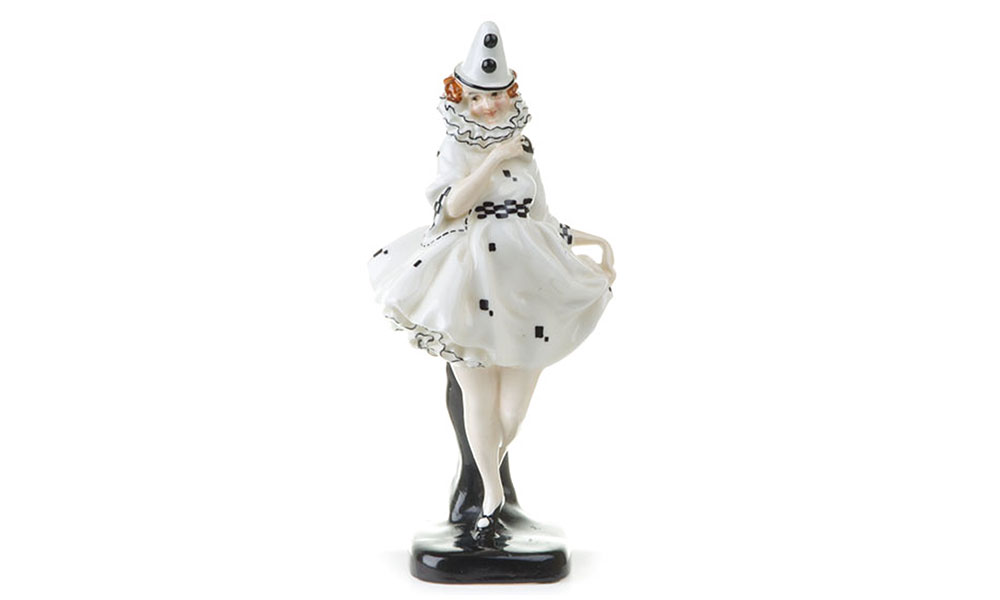
Royal Doulton Pierrette by L. Harradine

Royal Doulton The Mask by L. Harradine

Royal Doulton The Mask by L. Harradine
The bright young things of the Roaring Twenties loved to dress up as Pierrot and Pierrette and were captured in their costumes by many sculptors at European porcelain factories including Rosenthal and Royal Doulton. Many stylish Pierrots and Pierrettes are now showcased in the new Art Deco gallery at WMODA, which has been created to celebrate the 100th anniversary of the 1925 Paris World’s Fair, which launched the modernist style.

Little Pierrot Bronze and Ivory by G. Omerth
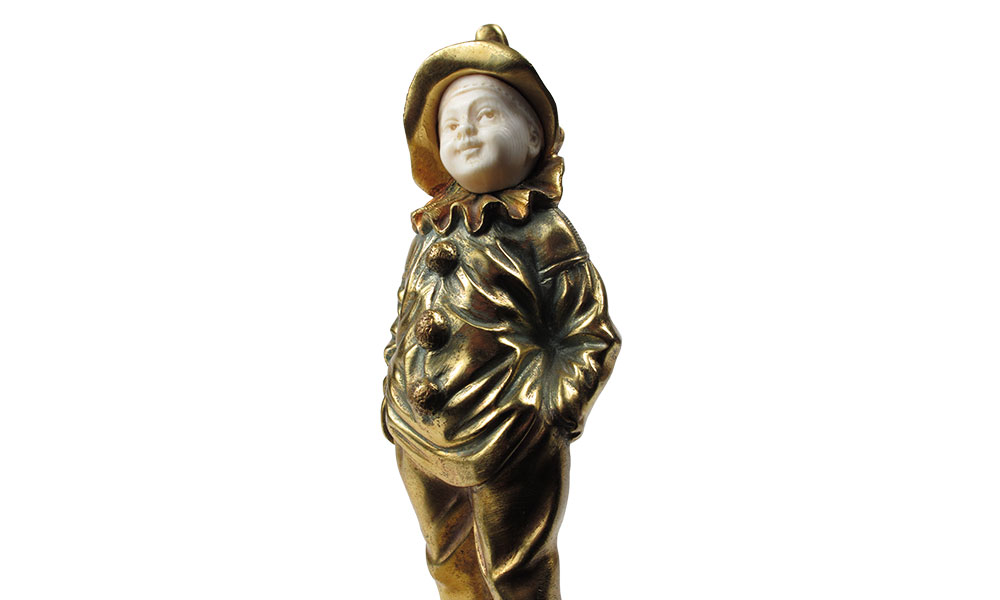
Little Pierrot Bronze and Ivory by G. Omerth
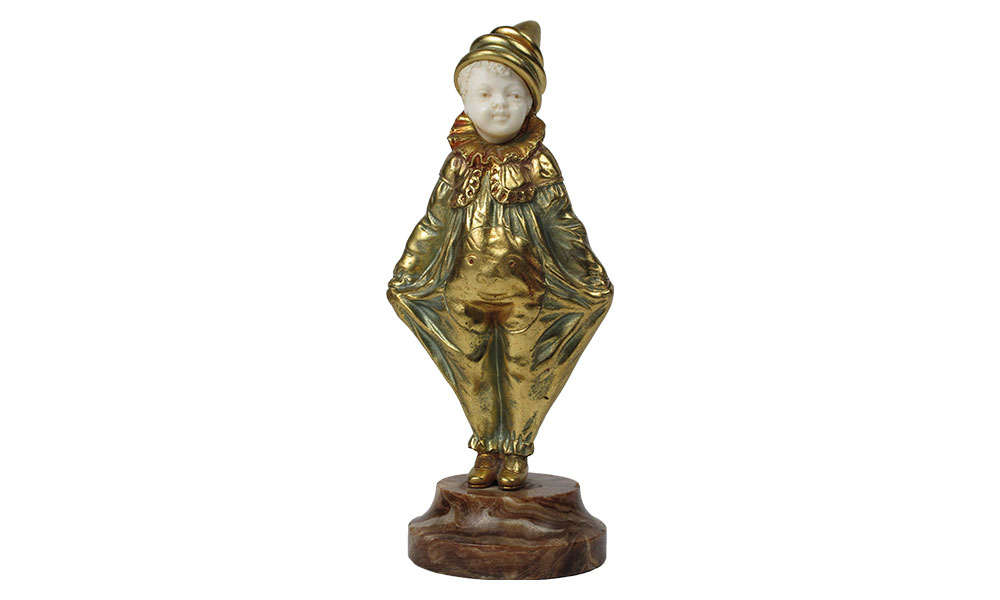
Little Pierrot Bronze and Ivory by G. Omerth
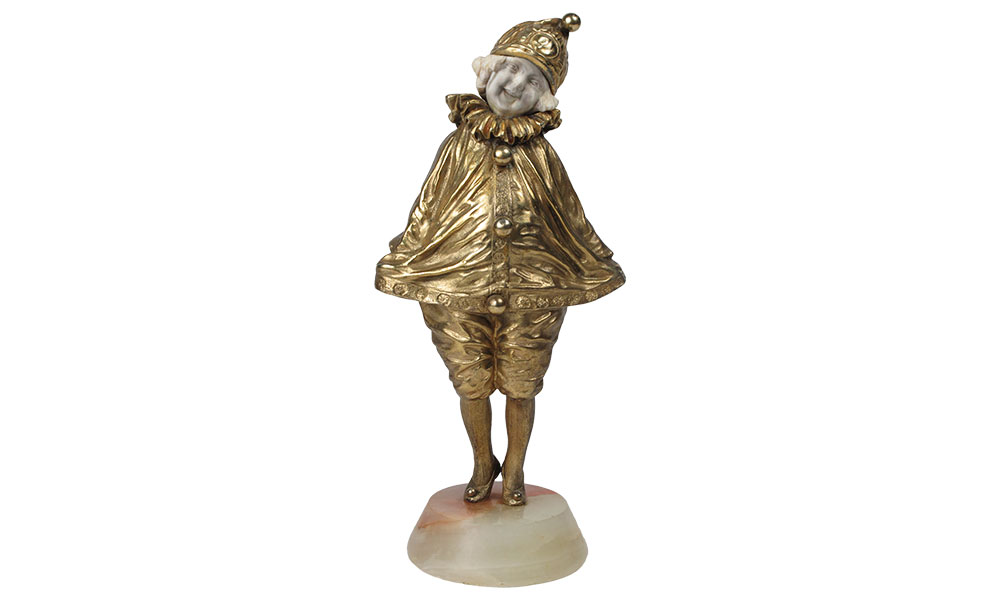
Little Clown Bronze and Ivory by D. Chiparus
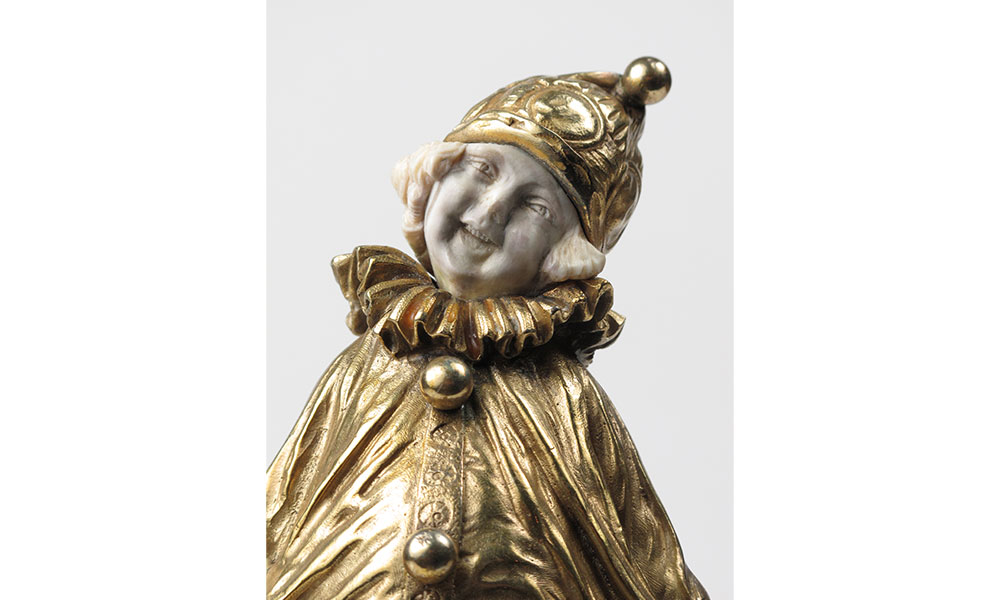
Little Clown Bronze and Ivory by D. Chiparus
The famous sculptor of the Art Deco era, Demetre Chiparus, created a statuette of a little girl in a clown costume, which was produced in patinated bronze and parcel gilt. His contemporary in France, Georges Omerth, also sculpted children as clowns in the chryselephantine technique, which combined bronze with ivory. Three choice examples can be seen at WMODA.

Raphael Tuck Young Hearts by F. Hardy 1913
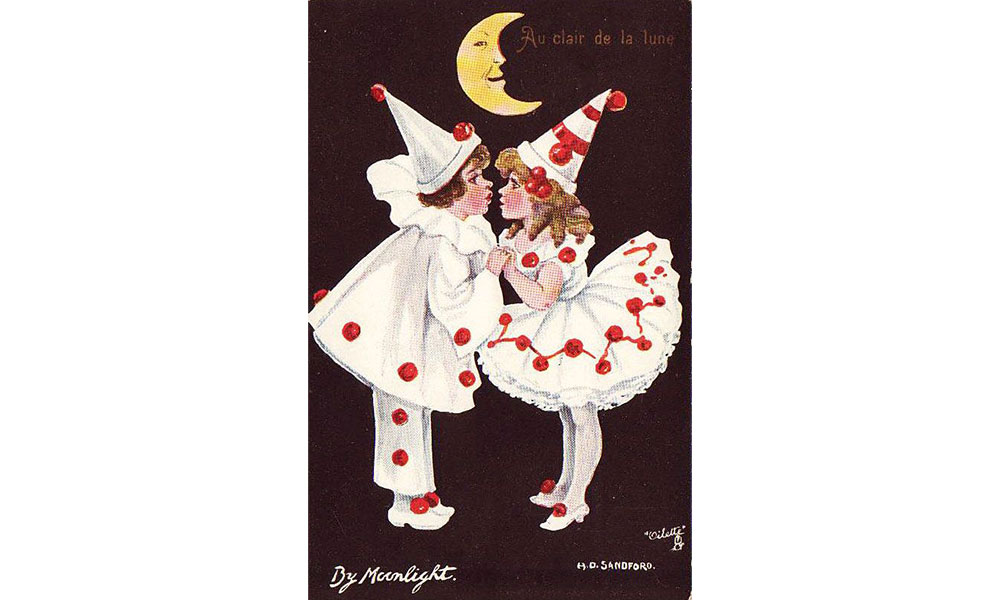
Raphael Tuck Card By Moonlight by H.D. Sandford
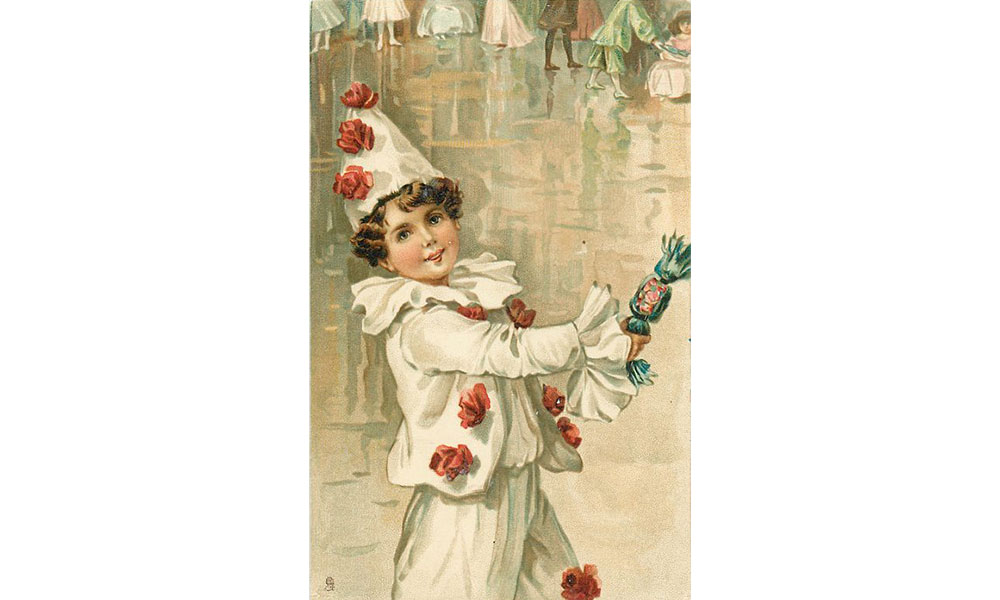
Raphael Tuck Christmas Card by E J Andrews 1907
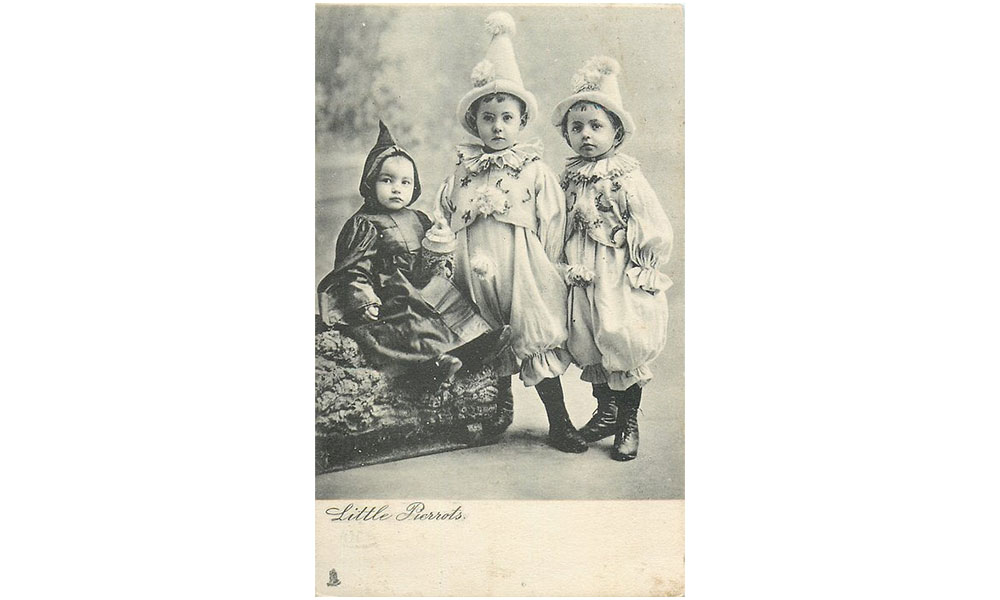
Raphael Tuck Card Little Pierrots 1905
Pierrot’s appeal continues to modern times, and David Bowie famously adopted his persona in the 1980s for his Ashes to Ashes video, asking his costume designer to make him “the most beautiful clown in the circus and claiming, “I’m Pierrot; I’m everyman.”
Read more about pierrots at WMODA
